Botswana Safari Report - Part 1
 Thursday, January 3, 2013 at 09:32PM
Thursday, January 3, 2013 at 09:32PM The Move To Medium Format
Back in September I led a safari to northern Botswana, which was my first safari where I shot exclusively with digital medium format gear. Sometime in the middle of 2012 I actually sold off all of my Nikon 35mm gear, adopted a Phase One IQ160 (60mp) digital back on a Phase One DF camera body and pursued the world of the biggest and best files I could possibly obtain. Here is the complete camera setup that I took with me:
- Phase One DF camera body
- Phase One IQ160 (60mp) digital back
- 28mm
- 45mm
- 80mm
- 75-150mm
- 200mm f/2.8 APO
- 300mm f/2.8 APO
- 2x Teleconverter
Drawbacks
There are major drawbacks with this approach, and the major issue is that autofocus speed an accuracy isn’t even in the ballpark of what 35mm gear can deliver. Another major limitation is that I am limited to ISO 100, 200 and 400 in a pinch. I have to make sure that I stay within my opinion ISO range, which is ISO 100 or 200. Oh, and I haven’t even gotten to the best part: my preferred wildlife lens is a Mamiya 300mm f/2.8 APO model, which I was able to find still in the original box and was unused. The 300mm lens equates to about a 190mm lens on a 35mm camera, so the images won’t be ‘in your face’ type images that fill the frame with the face of a lion. The catch? It is also a manual focus lens. Oh, and aperture selection is manual (on the lens) and cannot be controlled on the camera. So my process isn’t exactly what I would call easy, but then again I absolutely love challenges and the payoffs that go with them. These drawbacks are just obstacles on the way to HUGE files that can be printed at any size that I wish. My goal is to always make images that stir the soul, and to be able to print these images at any print size that my 44” printer can accommodate. 30x40” prints are my desired target on a fiber / baryta type paper, and 40x60” on canvas.
The Safari
This safari took place in northern Botswana, and we split our time between Chitabe Camp in the Okavango Delta and DumaTau Camp along the Linyanti River. I always like to split up my time between camps when I am in Botswana, because every camp has a different ecosystem, wildlife, look and feel that need to be experienced. Other places in Africa can work for only 1 camp, such as the Masai Mara, however Botswana is best when split between 2 or more camps.
While at Chitabe we took sole use of the camp for our 4 nights there. I typically take over a camp in order to control the dining schedule, as well as have sole use of all of the vehicles. September is a great time to be in northern Botswana, as it is one of the dry months and wildlife is easier to locate and photograph when the grasses are short.
After we left Chitabe we had 4 more nights at the newly built DumaTau Camp, which sits at the edge of the Linyanti River. These two camps could not be more different, as the vegetation, wildlife, scenery and feel are completely different. Between these two camps we had over the top lion sightings, great leopards, elephant water crossings, hyaenas, wild dogs and also general game. I have been running photographic safaris for the past 11 years and this was one of those safaris that had an excellent balance between all of the available mammal and bird species.
Ok, on to some of the images!
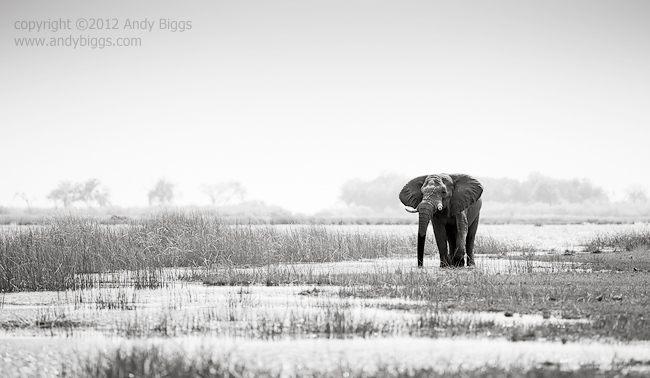
Elephant Along The Linyanti River
Phase One DF, IQ160, 300mm f/2.8 APO

Leopard On A Termite Mound
Phase One camera, IQ160 digital back, 200mm f/2.8 APO
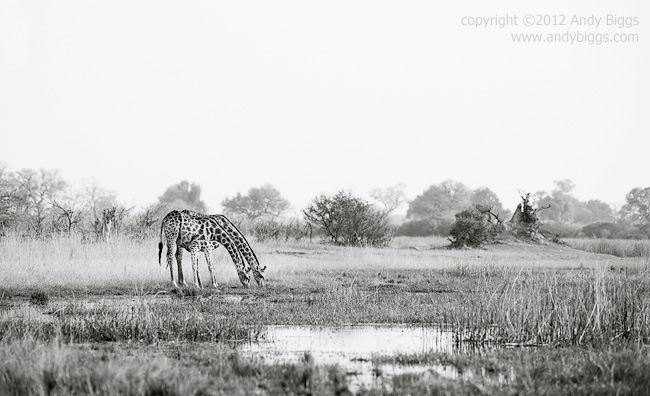
Two Giraffes Drinking From A Puddle
Phase One DF camera, IQ160 digital back, 300mm f/2.8 APO
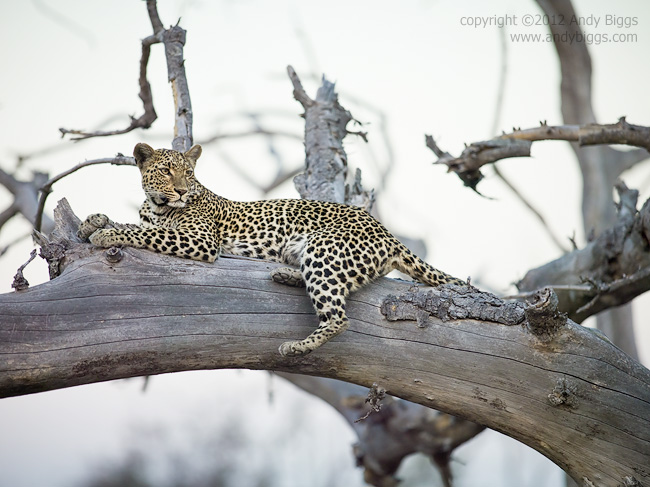
Leopard On A Tree
Phase One DF camera, IQ160 digital back, 300mm f/2.8 APO
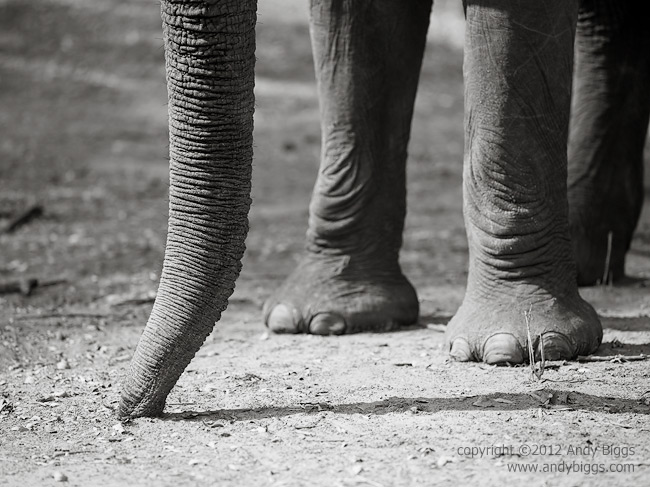
Elephant Parts
Phase One DF camera, IQ160 digital back, 300mm f/2.8 APO
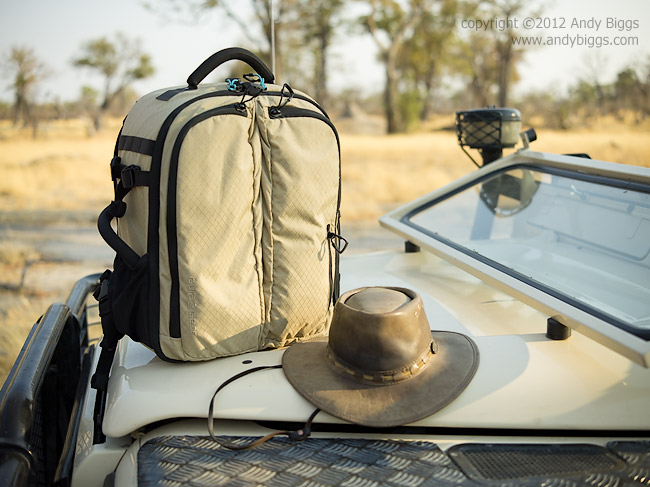
Gura Gear Bataflae 26L camera bag in tan

Phase One camera setup with 300mm f/2.8 APO lens

Phase One camera setup with 200mm f/2.8 APO lens (gaffer tape all over the place, to ensure the back was sealed)
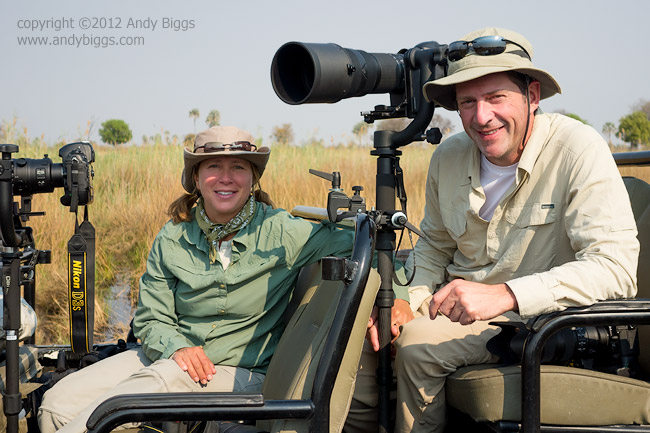
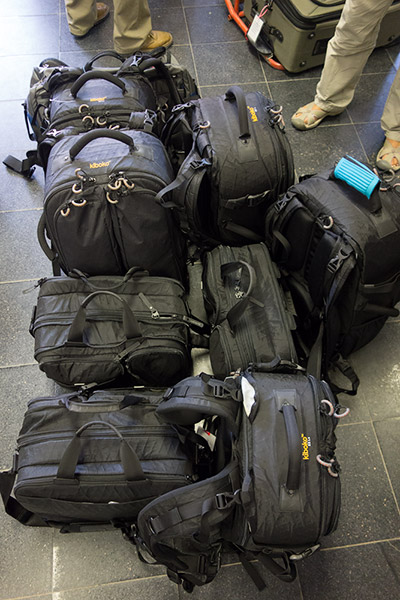
Pile ‘O Gura Gear Bags at the airport



Reader Comments (6)
Great post, and I love the shots with the new setup! I especially love the "creaminess" of the background. Plus, even though you can't get those "in your face" shots, I really like having the environmental aspect in your shots to give a great sense of place.
Beautiful images. Would love to see the prints.
I've been experimenting with Hasselblad 500 and film. Can't wait to get the scanned files today.
Will bring to Death Valley
Beautiful shots. We visited both Chitabe and Duma Tau in August, shortly after Duma Tau re-opened.
The medium format is intriguing, Is your reason solely to get more pixels and be able to crop more? I don't see any conclusions in your write up? How do you feel about the gear after having used it exclusively for a trip?
Loving these images Andy...sure sounds like a challenge worth accepting to shoot with this kit. It would suit me well as I love shooting a bit wider as well. Is there any place where we can see a high res version of eg the elephant photo??
I am new to African travel and apologize up front for asking a novice question. As I was reading the blog, I was struck by all the gear I see photographers packing. I too hope to take gear, probably just about everything I own in my case.
In planning this first trip to Africa however, we are being advised about a 33 pounds/person flight baggage limitation in Tanzania and elsewhere. How do you manage photographic gear with this restriction?
Any insights would be greatly appreciated. Thanks.
vr/ Rick Butterworth
Thanks for all of the comments! Sorry it took me so long to approve the comments, as I never received notification from my provider of the posts.
Morkel, I would love to share some bigger files, but am cautious about sending too large of a file around. Perhaps we can do through email privately?
Rick, 33lbs is a very common constraint in Tanzania and in Kenya for bush plane flights. On my own safaris that I operate I charter private aircraft to get around these limits. Most of my trips are somewhere between 35kg and 40kg of allowance, which is more than adequate. Perhaps you can purchase another seat on the airplane, which will give you more allowance on your own safari.